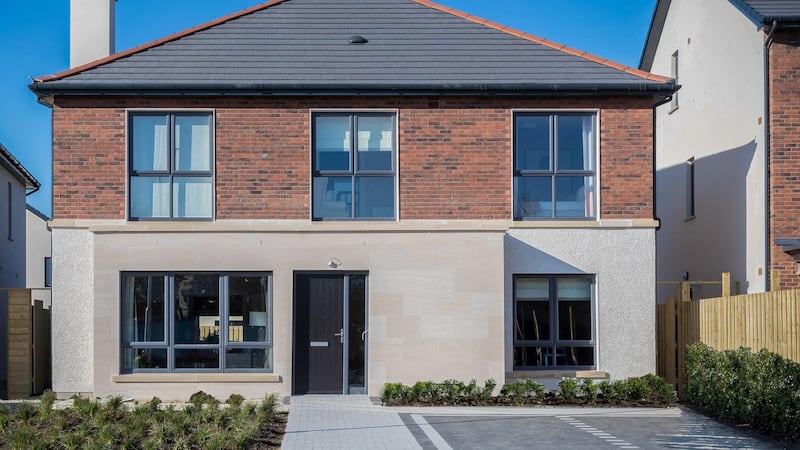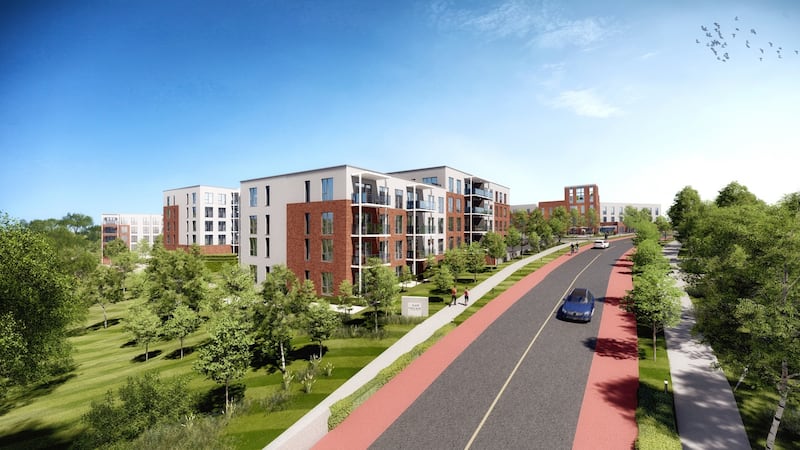It may sound like a gimmick, but it isn’t. Yes, by using existing State incentives, such as the help-to-buy scheme, as well as the forthcoming shared-equity initiative, it will soon be possible to secure a significant discount on the cost of a new home.
Below we’ll show you how to do it, but it might leave you wondering if, without such incentives, which may well have an inflationary effect on property prices, you could not have just bought the home for less to begin with.
The incentives
To secure your discount, you’ll need to avail of two State incentives.
First is the help-to-buy scheme, which gives tax relief of up to 10 per cent of the property’s value, up to a maximum of €30,000 on a maximum property value of €500,000. It is currently offered at an “enhanced” rate, which is due to run out at the end of the year, but that shouldn’t cause undue expediency in potential buyers, as the scheme has been extended repeatedly.
The second is the forthcoming shared-equity scheme. According to the Department of Housing, it is designed to “bridge the gap between the first-time buyer’s maximum mortgage (plus deposit including any help-to-buy contribution), and the market price of the new home they want”.
Under the scheme the Government will take a stake in a new property worth up to 20 per cent of its purchase price, but the property must fall into certain price caps.
The details are not yet all clear – the eligibility criteria and some of the operational conditions will be established in forthcoming regulations – but we know enough to consider how the scheme may work once it comes to fruition later this year.

Potential homeowners looking for the maximum savings will need to find a home to qualify for both schemes. In short, this means that you will need to be a first-time buyer; the home must be new; and the price of the home must be within the limits set under shared equity.
The highest caps are in Dublin city and Dún Laoghaire-Rathdown, where there is a cap of €450,000 on houses and €500,000 on apartments. A cap of €400,000 is expected on houses in Cork city, Fingal, Galway city, south Dublin and Wicklow, and €450,000 for apartments in Cork city, Fingal and south Dublin.
There are five further suggested price limits: €350,000 for Cos Cork and Galway (outside the city areas), Kildare, Limerick and Meath; €300,000 in Clare, Westmeath and Wexford; €275,000 in Carlow, Louth and Offaly; €250,000 in Kerry, Kilkenny, Laois, Roscommon and Waterford; and €225,000 in the lowest-priced counties, including Cavan, Donegal, Longford, Leitrim, Mayo, Monaghan, Sligo and Tipperary.
How it works
According to the Department of Housing, it seems that a key feature of the shared-equity scheme is that potential home buyers will first need to access the maximum loan amount they can under the Central Bank of Ireland lending rules in order to be able to qualify for equity support.
So, for example, if you can afford to buy a home on the market for €450,000, based on the lending rules, you’ll only likely qualify for the help-to-buy scheme, not shared equity.

The lending rules mean potential buyers can borrow only up to 3½ times their income. Although exceptions are available, these are typically much harder to come by for those on lower incomes, so we’ll stick with this criterion.
A single person or couple, then, on single or combined income of €40,000 can borrow up to €140,000; a person or couple on €65,000 can borrow up to €227,500; income of €80,000 can achieve borrowings of €280,000; and income of €100,000 a mortgage of €350,000.
So how can applicant(s) on earnings of €65,000 get from €227,500 to buy a home worth €300,000?
First, thanks to help-to-buy, their deposit of €30,000 is taken care of, which means that they now have to fund €270,000.
For the next chunk they can look to the Government for a 15 per cent stake (€45,000), which brings the amount of a mortgage they need down to €225,000. This means a reduction in the price of the home of 25 per cent.
What about someone earning €100,000? Under the mortgage rules they can qualify for a home worth €350,000 – not enough, perhaps, for many parts of Dublin.
Let’s say they target a home in Dún Laoghaire-Rathdown selling for €450,000. With help-to-buy the cost comes down to €420,000 (relief is capped at €30,000), and with the Government’s 15 per cent equity stake (worth €67,500) it drops back to €352,500 – enough for the person or couple to proceed with the purchase. In this case the couple are getting a “discount” of almost €100,000 – or 22 per cent – on the purchase price of the property.
This reduction is greater if the buyer gets a bigger stake from the Government. With the help-to-buy rebate of €30,000, as well a 20 per cent shared-equity stake, this drops the cost of a €450,000 home back to €330,000 – enough for a person or couple on €94,285 to buy a home worth €450,000, or for 27 per cent less than the market value.
Without these incentives they would have needed income of almost €130,000 to buy such a home, plus savings of €45,000 for a deposit.
The small print
As outlined above, shared equity is a neat way of closing the gap between how much someone can borrow and the sale price of a new home.
But there are some issues you should consider first.
First, although the Government’s stake won’t cost you anything initially, fees will kick in after five years.
As a result, applicants should expect to benefit most from this scheme if they can pay off the equity loan within the first five years, before the interest kicks in. Of course, one might suggest that if they could afford to do this in the first place, they wouldn’t need the affordable-home product.
Fees are expected to start at an annual charge of 1.75 per cent from years six to 15 (so €787.50 on equity of €45,000), rising to 2.15 per cent from years 16 to 29 (€967.50), and 2.85 per cent above that (€1,282.50).
A sum of €780 or so a year may not affect your decision, but that’s about €21,000 in “dead money” over 25 years.
And, remember, these are fees on the equity stake, not a repayment of it. Should you sell in year 18 and look to repay the equity stake, you will lose all the money you paid in fees on the equity stake.
Not only that, but if you have your mortgage repaid after 30 years, you could still be stuck paying the fees on the equity stake.
On the other hand, you could argue that €21,000 is small change compared with perhaps as much spent on an annual basis if renting.
There is no obligation to repay the Government’s stake, but most people may look to do this, rather than pay such fees, or to try and take full ownership of the property. This can be done by selling, or by remortgaging if your income should rise, or just by repaying it outright through savings or a windfall.
Another issue to consider is that by opting for the Government’s “discount”, it will limit your search to a new home – even if a property that better suits your needs in the long term can only be found second-hand.
There are also the questions of whether the Central Bank will give the thumbs-up to the scheme and whether it will drive price growth, particularly when you consider the limited supply of new homes and the increase in potential buyers the scheme is likely to provide for.
Finding a home
The scheme has already found favour with potential new-home buyers; a recent survey from Ibec, for example, found that more than half of respondents were in favour of the scheme, while about a third said they were interested in availing of it.
The problem for them will probably be actually finding a home – no mean feat given the crunch on supply of new homes following restrictions on activity over the past year.
Last week, for example, the home builder Glenveagh Properties said it was on track to deliver 1,150 homes for 2021, but all of these are “now sold, signed or reserved”. This means that while it may bring some new developments to market during 2021, you won’t be able to move in until 2022 or later.
Although at first glance the price caps look more than generous – €350,000 in Limerick, for example, where average house prices are only about €225,000 – the problem is finding a home within this.
Let’s look at Dublin city centre, for example, where applicants can buy an apartment for up to €500,000. If you search for a new home with these parameters on either Daft.ie or MyHome.ie, you’ll be told “No properties matched your search”.
Or what about in Dún Laoghaire-Rathdown, where a price cap of €450,000 is expected to apply? Again, no new homes in this price category currently meet this cap.
In Cork city, we could find just four new developments on Daft.ie under the €400,000 price level. One of these, Ballinglanna in Glanmire, has three-beds from €310,000.
In Wicklow, we found five developments on the market under the €400,000 level, including Avondale Grange in Rathdrum, where three-bed semis are expected to start at €269,500.
The new-homes market is likely to be less than bountiful this year.
However, some new developments are in the pipeline, which, as things open up, might suit applicants under shared equity.
In Cherrywood, for example, a development of new three- and four-bed homes is being launched at Domville, while at Clay Farm, in Leopardstown, Savills expects to bring homes in the €420,000-€450,000 price range to market later this year.












